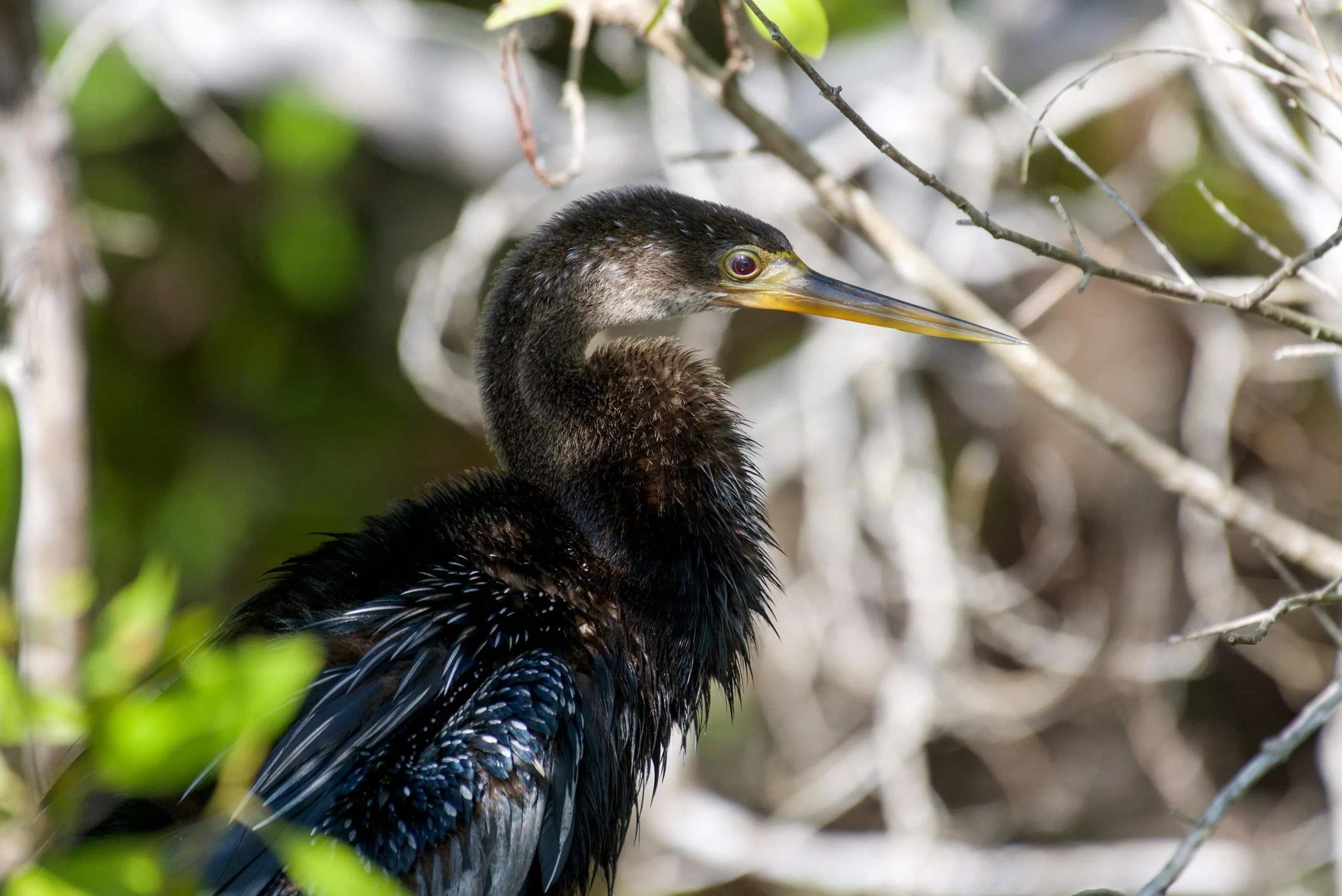Florida is home to an exceptional variety of birds. Indeed, the pleasant weather and diverse array of habitats make this state an optimal home for hundreds of bird species. In fact, more than 550 types of birds in Florida have been observed. Many species within the state could be considered black birds in Florida, and distinguishing between these creatures can be challenging.
The black birds of Florida are not limited to blackbird species, instead, these creatures can be found in a wide variety of shapes and sizes. From big black birds in Florida to small, this guide is your key to understanding the various black birds that can be found in the state. Read on if you’re ready to learn more about black Florida birds!
Table of Contents
20 Common Black Birds In Florida
Black-bellied Whistling-Duck
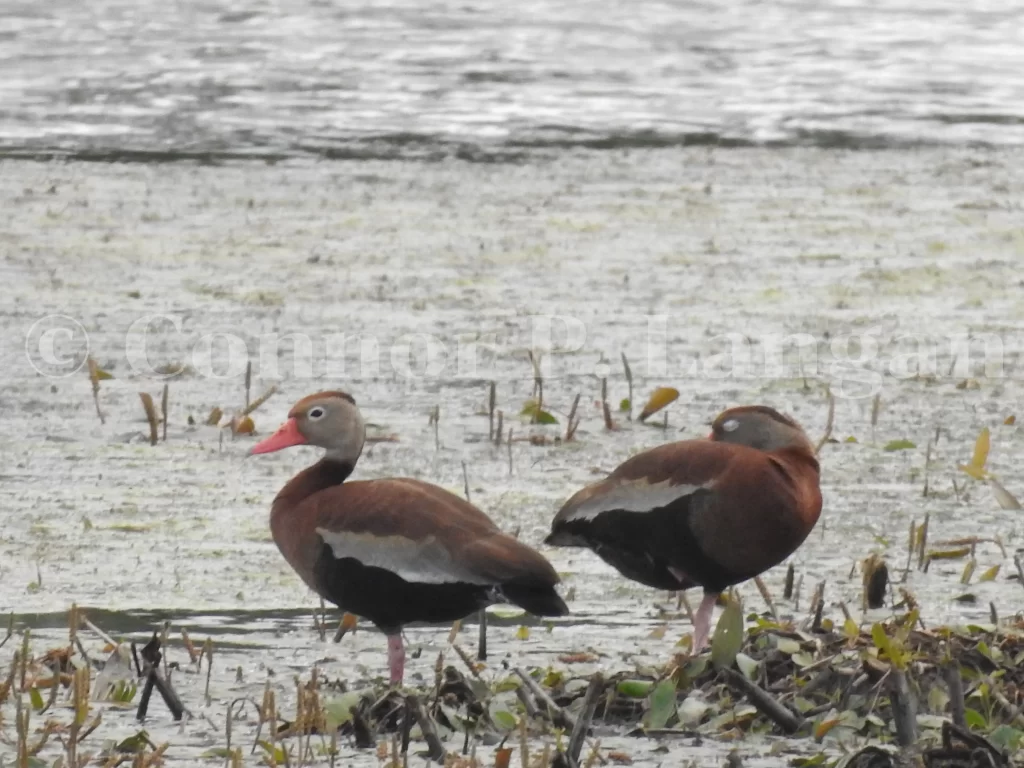
Black-bellied Whistling-Ducks are fascinating Florida ducks. Although they could be better classified as brown birds in Florida, their bellies are indeed black. Thus, this earns them inclusion on this list.
Black-bellied Whistling-Ducks can be found throughout the year in many parts of the state. Unlike most ducks, this black bird in Florida nest in tree cavities. Being birds in Florida with long legs, they can more easily perch on trees compared to other ducks.
Although one would think that Black-bellied Whistling-Ducks would stand out with their bright pink bills and legs, they can keep a fairly low profile in their wetland habitats. However, they are quite social, and diligent birders may be able to spot sizable groups of these waterfowl.
Muscovy Duck (Domestic Type)
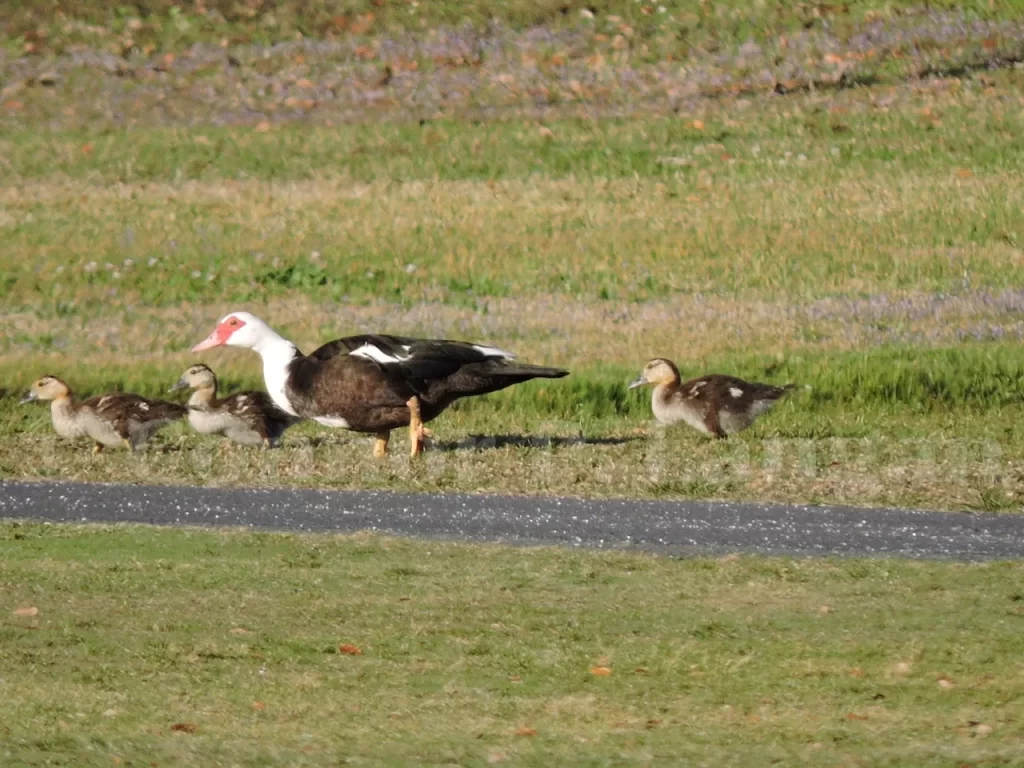
Muscovy Ducks are native throughout Central and South America, but domestic populations of these birds are established throughout the entirety of Florida. The domestic varieties that are abundant in Florida look a bit different from the wild variety of these birds. Both varieties are entirely black, but domestic Muscovy Ducks have white feathers and many red, warty bumps on their faces.
Domestic Muscovy Ducks can be observed in a variety of urban environments. Ponds, waterways, lakes, streams, and other aquatic areas are good places to find these creatures. They tend to stick to their home ranges and avoid flying around very much.
Domestic Muscovy Ducks are quite aggressive, and they regularly chase off other waterfowl from their vicinity. Although the success rates of domestic Muscovy Ducks are quite low, these Florida black birds have nonetheless managed to prosper.
Chimney Swift
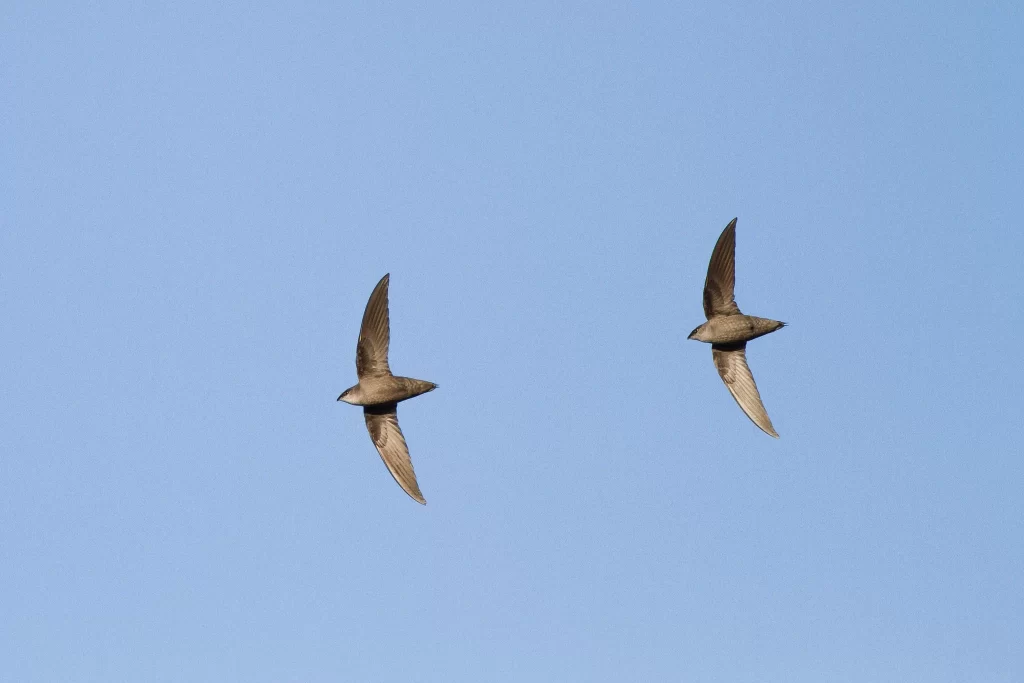
Chimney Swifts—also known as “flying cigars” are small black birds in Florida with dark gray bodies. Although they don’t have true feathers, they appear black to most who observe them because they are constantly flying, making it difficult to obtain a good look.
Chimney Swifts are summer residents in Florida, but they leave the state in the fall for their wintering grounds in South America. They are aerial insectivores, making them popular among people who know about their amazing benefits.
These gray birds in Florida are aptly named, as they rely on chimneys to provide roosting and breeding habitats. Before chimneys existed in America, Chimney Swifts readily nested in snags and other dead trees. Those who want to attract these vulnerable birds can establish a chimney swift tower.
American Coot
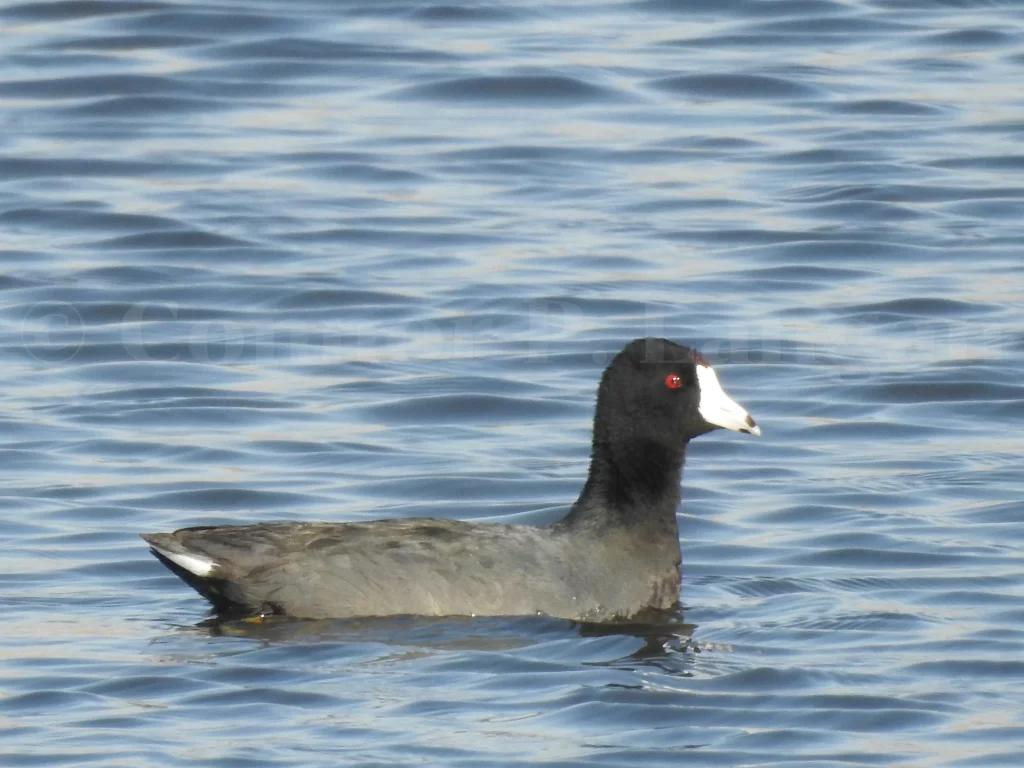
A Floridian who has not observed an American Coot before is surely living under a rock, as these birds are very common black birds in Florida. Although many believe that coots are ducks in Florida, these birds are—in fact—in a group of birds known as rails.
American Coots are most abundant in Florida during winter, as the state hosts substantial numbers of wintering birds. Come summer, many coots head north to breed elsewhere, but some stick around to breed in Florida.
Watch for these common birds in Florida in slow-moving freshwater habitats like marshes, ponds, and lakes. Here, they may be swimming around or walking with their fascinating feet on land.
Black-necked Stilt
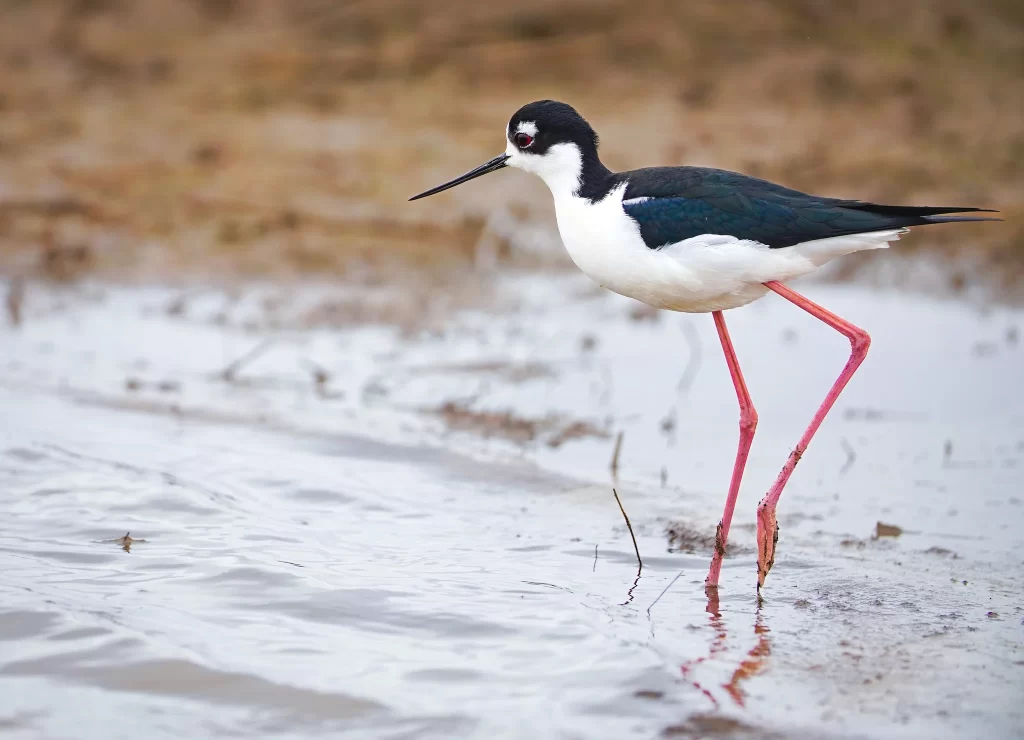
Like Black-bellied Whistling-Ducks, Black-necked Stilts are another example of birds in Florida with long legs. In fact, these shorebirds have the longest legs in proportion to their bodies of all the birds in North America.
Although a Black-necked Stilt’s legs will be the first things that stand out about these birds, birders will also note that they are black and white birds in Florida. Indeed, this fact cannot be overlooked, and those hoping to observe one of these magnificent birds will be relieved to hear that they can readily be found throughout much of the state.
Black-necked Stilts will not be present along beaches like many other shorebirds in Florida. Instead, look for them in shallow freshwater marshes and ponds where they use their long legs to search for food.
Black Skimmer
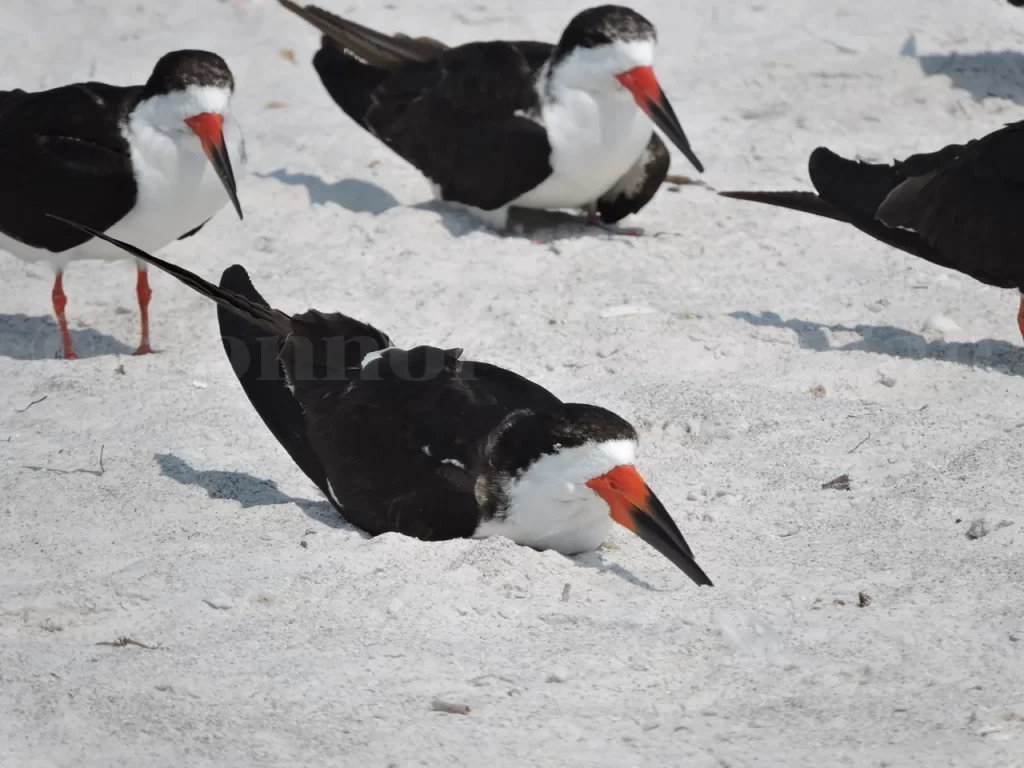
Although Black Skimmers are common beach birds in Florida, most who observe this Florida black bird are clueless as to what it is. It turns out that Black Skimmers are fascinating black birds of Florida that can be found year-round in the Sunshine State.
Black Skimmers use their bills—with their longer lower mandibles—to skim along the ocean’s surface and collect prey. They often roost in sizable groups on beaches with other beach birds like wintering seagulls and shorebirds.
Black Skimmers are regular along Florida’s beaches, but birders hoping to observe these birds will not have any luck seeing them inland, as they have strong ties to coastal environments. So, head to your nearest beach if you’re ready to see a Black Skimmer!
Anhinga
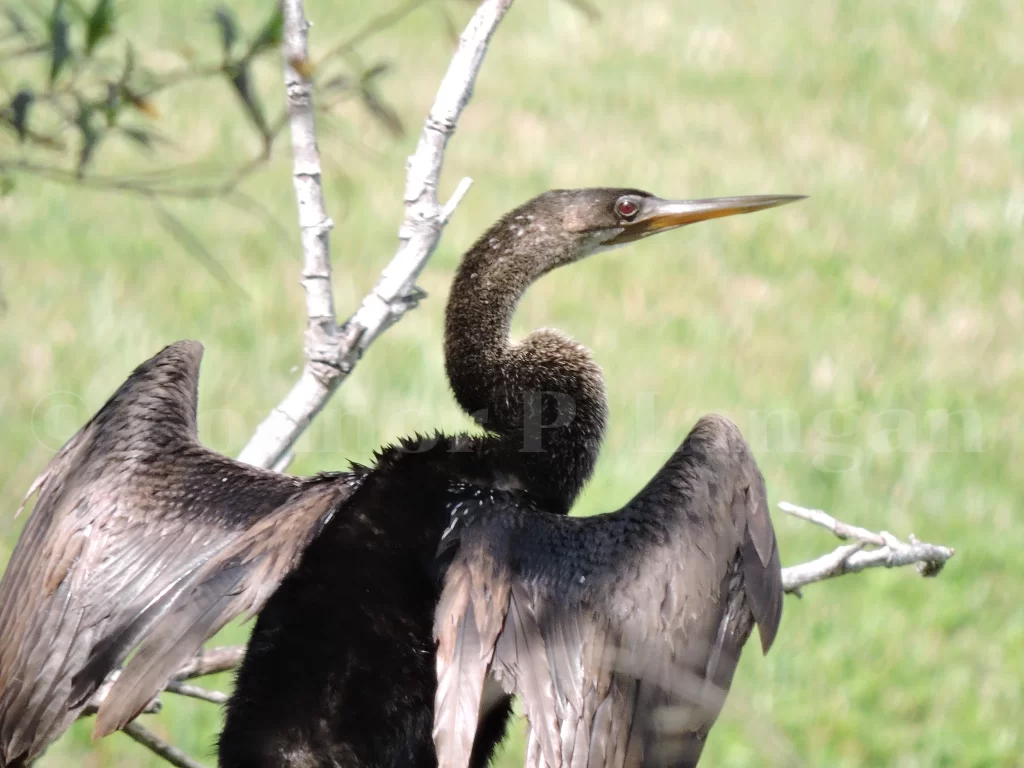
Anhingas are large birds in Florida with long necks and spear-like bills. These big black birds in Florida are well-suited for navigating through the water as they hunt fish and amphibians.
Anhingas are expected throughout Florida, but they get progressively less numerous as one travels further north. An Anhinga sitting on a perch as it dries its wings is a familiar sight for many Floridians.
Look for these unusual-looking birds in aquatic habitats like ponds and lakes. Here, they often submerge their entire bodies underwater as they swim around looking for fish. You may spot the tiny head of an Anhinga sticking up out of the water if it is trying to keep a low profile.
Double-crested Cormorant
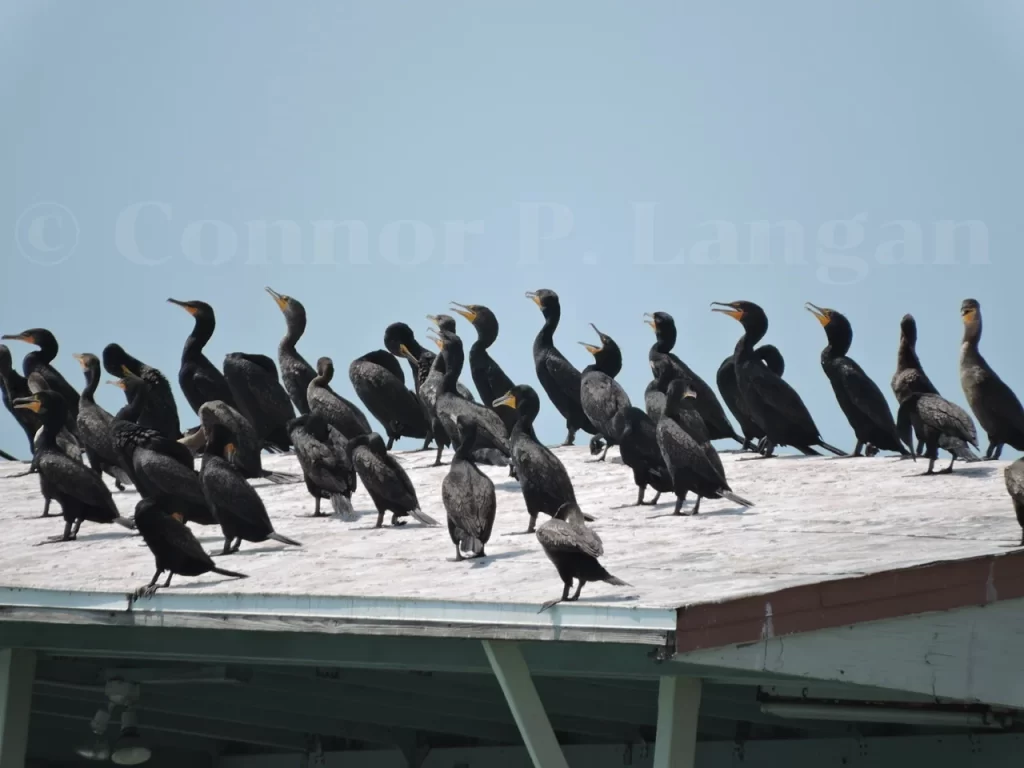
Double-crested Cormorants are similar to Anhingas in that they are all-black birds with long necks that frequent aquatic habitats. However, note that they have stout, hook-shaped bills rather than long, spear-like bills.
Double-crested Cormorants are most numerous in winter, but plenty remain in the state during summer. They are more social than Anhingas, and they often roost and travel in flocks.
Unlike Anhingas, Double-crested Cormorants will forage in both fresh and salt water. Therefore, you may find this Florida black bird at piers, ponds, rivers, and lakes across the state. These large black birds in Florida are skilled anglers, able to catch fish that are much bigger than their heads.
Black Vulture
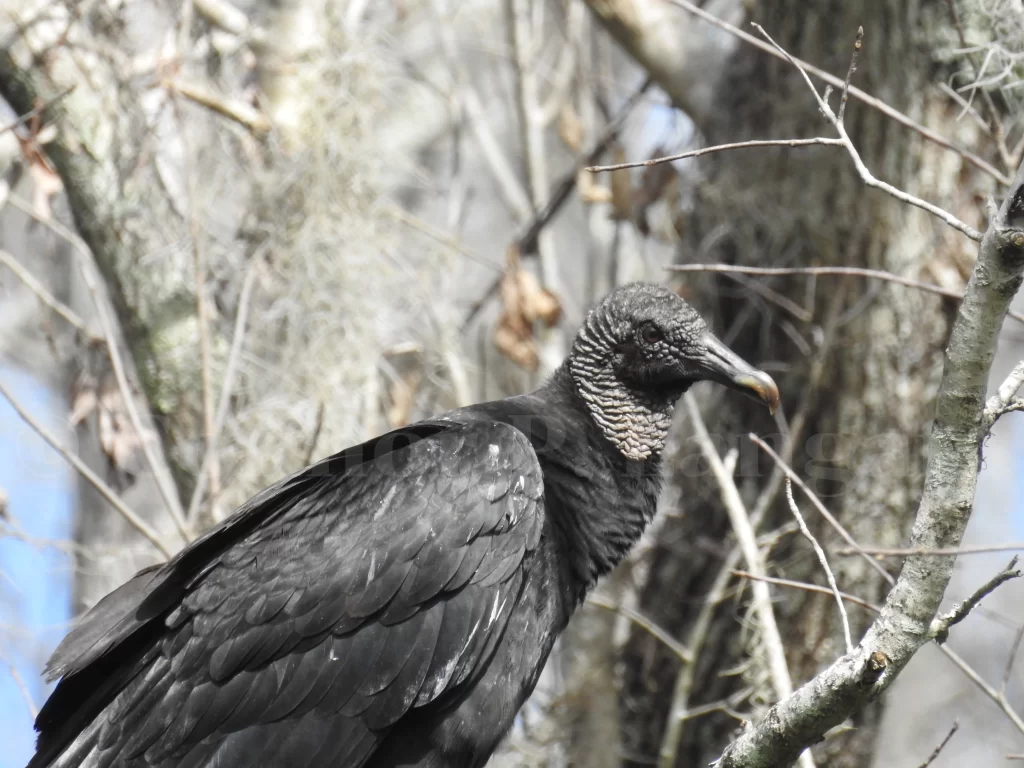
Black Vultures are big birds in Florida with entirely black bodies; even the heads of these birds are black. These scavenger birds in Florida are regularly seen soaring through the air from mid-morning until later in the day when the thermals die down.
These birds of prey regularly associate with Turkey Vultures at sites in which they eat. Sizable roadkill such as deer may attract dozens of vultures. Regardless of where one travels in the state, Black Vultures will be present and numerous.
These wild birds in Florida may be found flying over a wide array of habitats as they scan for potential meals. Therefore, Black Vultures may show up on beaches, along roads, and even in forests.
Turkey Vulture
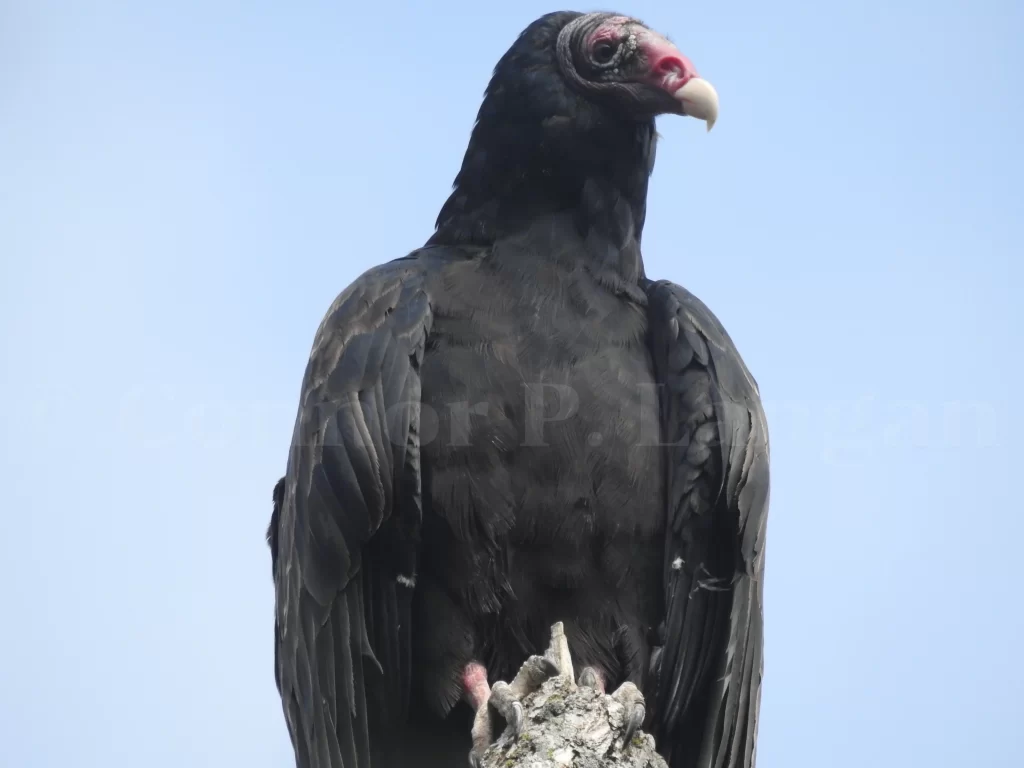
Turkey Vultures are observed more frequently than Black Vultures. In fact, they are among the most common birds in Florida overall, as more than 850,000 Turkey Vulture sightings have been reported to eBird in Florida alone.
Mature Turkey Vultures are not entirely black like their Black Vulture counterparts, as their namesake red heads are quite apparent. Some Turkey Vultures are migratory birds in Florida, heading north after winter. However, many Florida Turkey Vultures remain in the state all year.
Like Black Vultures, Turkey Vultures can be found soaring over a wide array of habitats as they search for food. They can be separated from Black Vultures in flight by their two-toned wings and the dihedral in which they hold their wings. They are among the largest black birds in Florida.
Crested Caracara
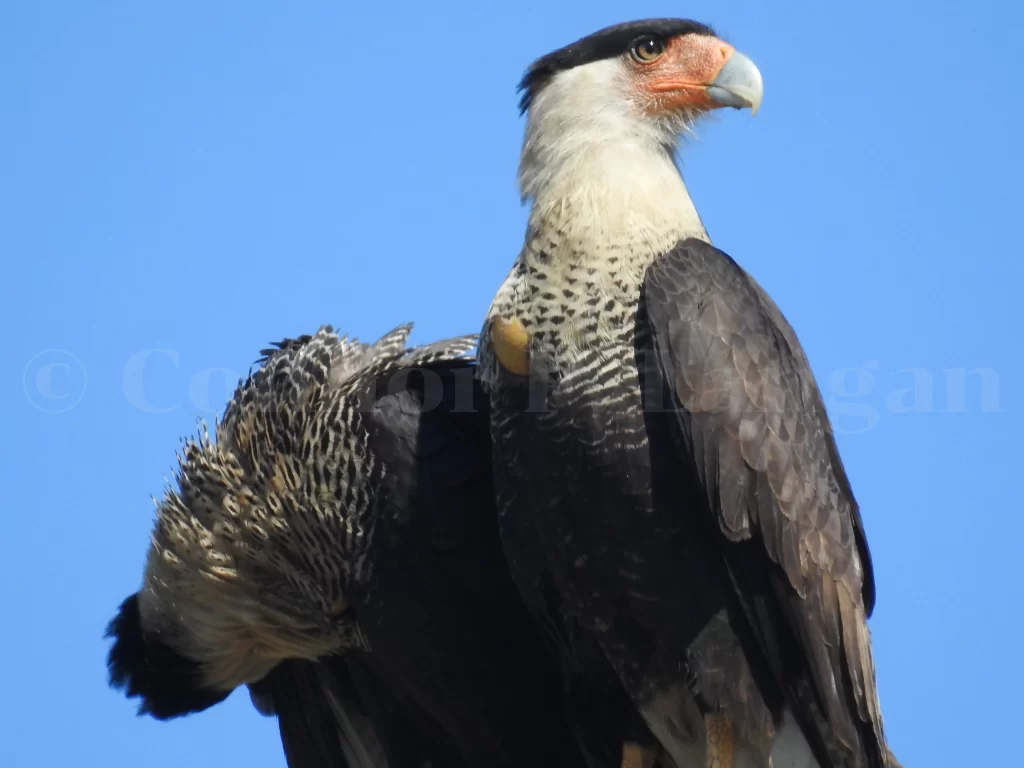
Crested Caracaras are Florida birds of prey that many out-of-state birders hope to add to their list when they visit Florida. Indeed, Florida is one of the premier places in the United States to observe these fascinating falcons.
These south Florida black birds don’t tend to wander any further north than Orange City, so those hoping to see one of these tall birds in Florida will have to travel to the central or southern portions of the state.
Crested Caracaras are raptors of open locations such as fields, grasslands, and scrubland. These black birds of Florida readily walk along the ground as they search for reptiles to eat.
American Crow
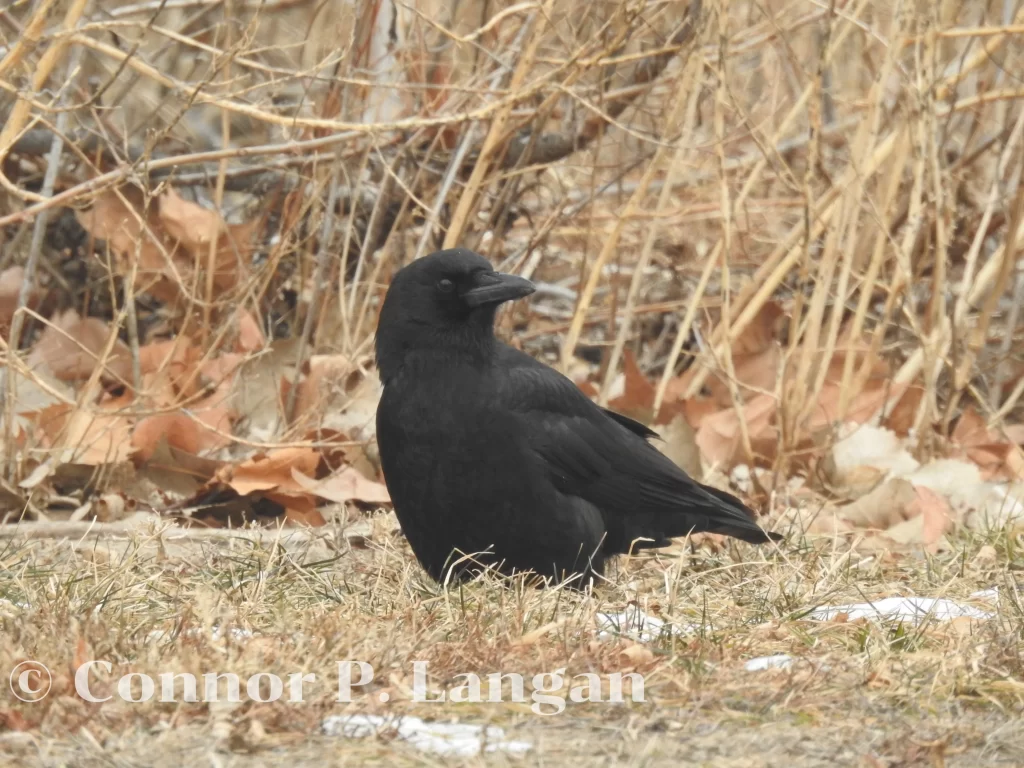
American Crows are large black birds in Florida that are more common in the Florida Panhandle compared to southern Florida. They are present in the state all year, but they may be most obvious in the fall when they form large roosting groups.
These black Florida birds can be found in a wide array of habitats throughout the state thanks to their varied diets. Fruits, garbage, seeds, insects, carrion, and even other birds may be eaten by American Crows.
American Crows tend to be more common in forested areas compared to Fish Crows. Otherwise, Fish Crows seem to be better adapted to flourishing in other areas of the state compared to American Crows.
Fish Crow
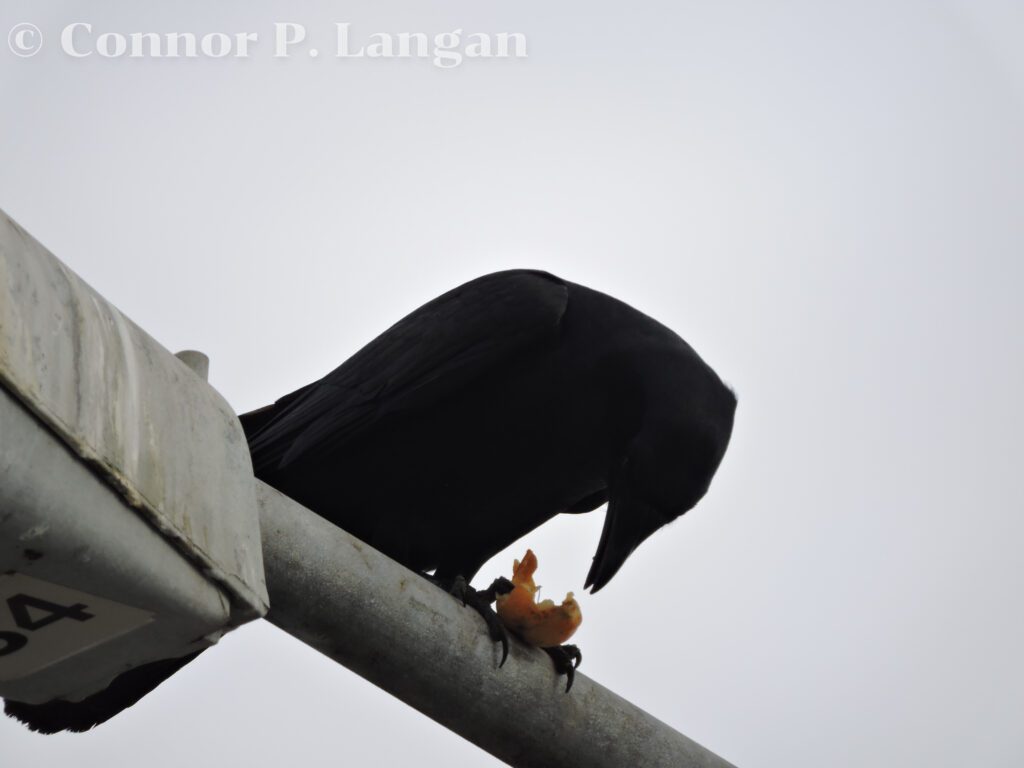
Although Fish Crows are smaller than American Crows, they are considerably more numerous. Indeed, the nasal calls of this Florida black bird often fill the air in a wide array of different habitats across the state.
Fish Crows are feisty for their size, and they readily chase away predatory birds in Florida such as hawks or owls. Intelligent and social, Fish Crows have all the skills necessary to thrive in the humid conditions of Florida.
Fish Crows are found in a slew of habitats ranging from beaches to urban neighborhoods. They are incredibly resourceful, and it seems that there is never a shortage of food for this black bird in Florida.
European Starling
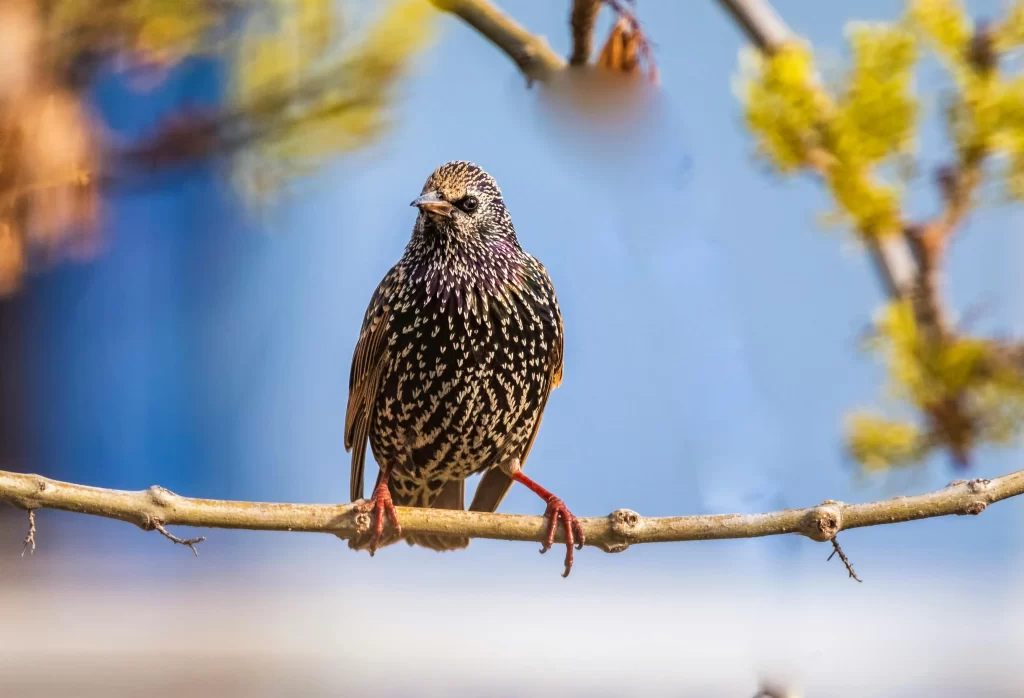
European Starlings are despicable invasive birds in Florida. They are well-established throughout the entirety of the state, but—fortunately–they are not as numerous in Florida compared to other states.
These Florida black birds are easily recognizable thanks to their glossy black plumage. They are tremendously social, as these small black birds in Florida are routinely observed in groups of several dozen on power lines in urban areas.
European Starlings are aggressive cavity nesters that readily displace native songbirds from potential nesting sites. Some have a hard time distinguishing these combative birds from grackles. Luckily, it is easy to separate these groups of birds when you know what to look for.
Eastern Towhee
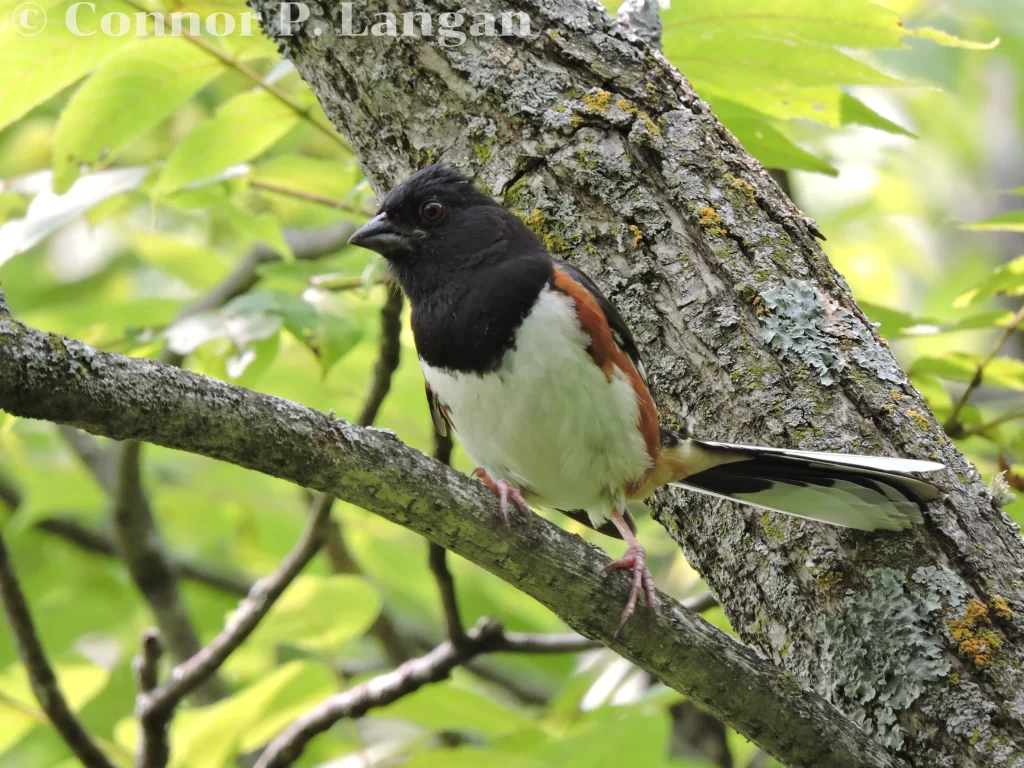
Eastern Towhees are a species of sexually dimorphic sparrows in Florida. Whereas the males are certainly among the types of black birds in Florida, the females are brown and white.
Many Floridians have never observed this species even though they’re common birds in Florida throughout the year. However, Eastern Towhees are shy, and they rarely venture far from the dense thickets that they call home.
Those keen on observing this species can listen for the namesake song sung by males. Following this song may lead you to a glimpse of one of these black and white birds in Florida.
Red-winged Blackbird
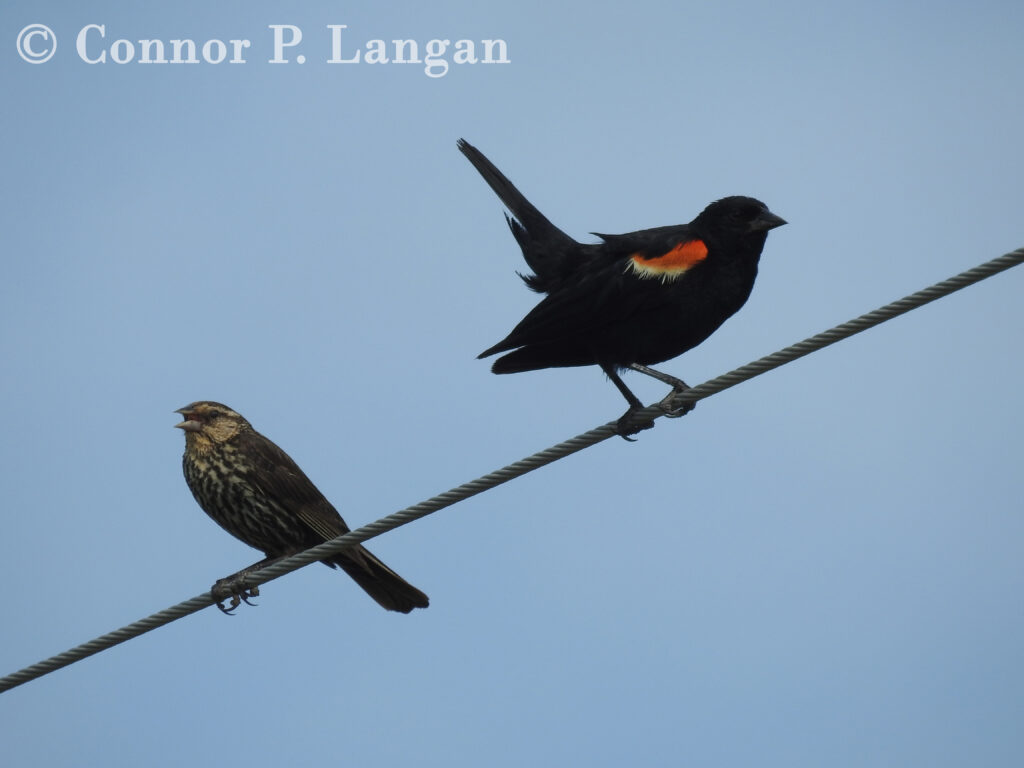
Red-winged Blackbirds are among the most familiar birds in the United States, and this reality is no different for Florida. Anyone who has observed these Florida blackbirds knows that the females are brown, but the males are black and red birds in Florida.
The many wetland environments provide plenty of suitable habitat for Red-winged Blackbirds in the state. Indeed, almost any freshwater ecosystem will support decent populations of this black bird in Florida.
Male Red-winged Blackbirds can be quite territorial. Anyone who has gotten too close to a nest certainly knows that these blackbirds in Florida are not afraid to drive intruders away from their territory.
Brown-headed Cowbird
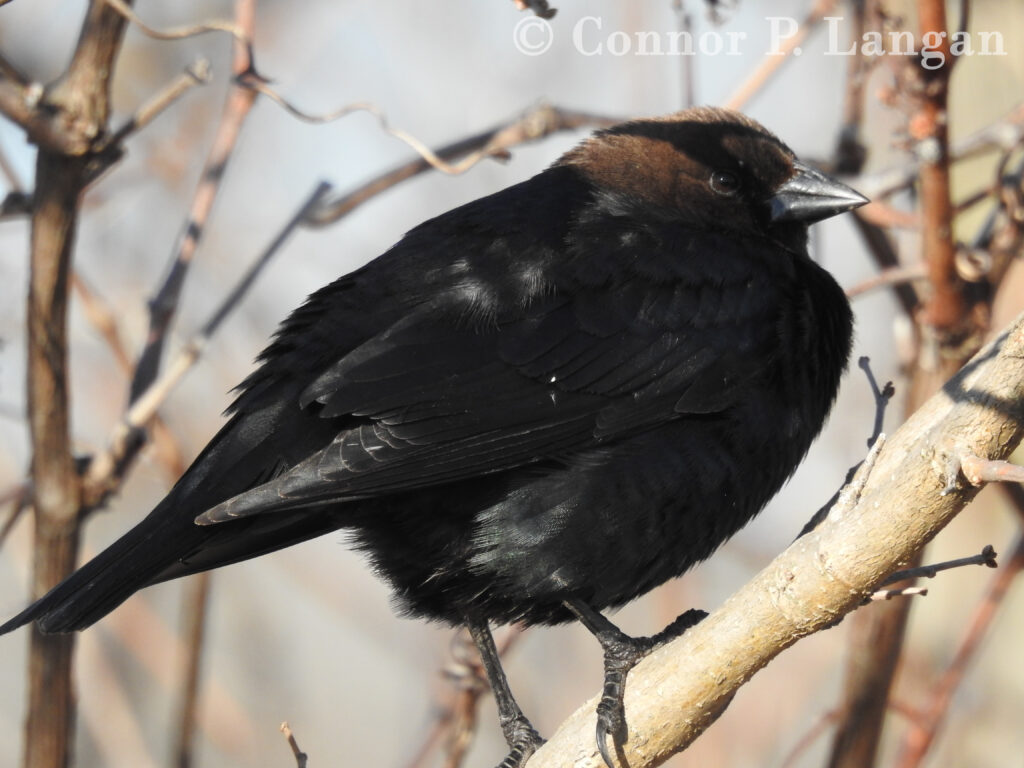
Brown-headed Cowbirds are the most common of Florida’s three cowbird species. Although the females are brown birds in Florida, males have glossy black birds and brown hoods.
Brown-headed Cowbirds are brood parasites, meaning they lay their eggs in the nests of other birds. This means that adults are free to wander around the state at their leisure throughout the year.
Brown-headed Cowbirds are usually found in open to semi-open areas. These Florida black birds are known to frequent pastures where they readily feed on insects that are disturbed by cattle. These blackbirds in Florida are rarely seen within the forests of the Sunshine State.
Black-and-white Warbler
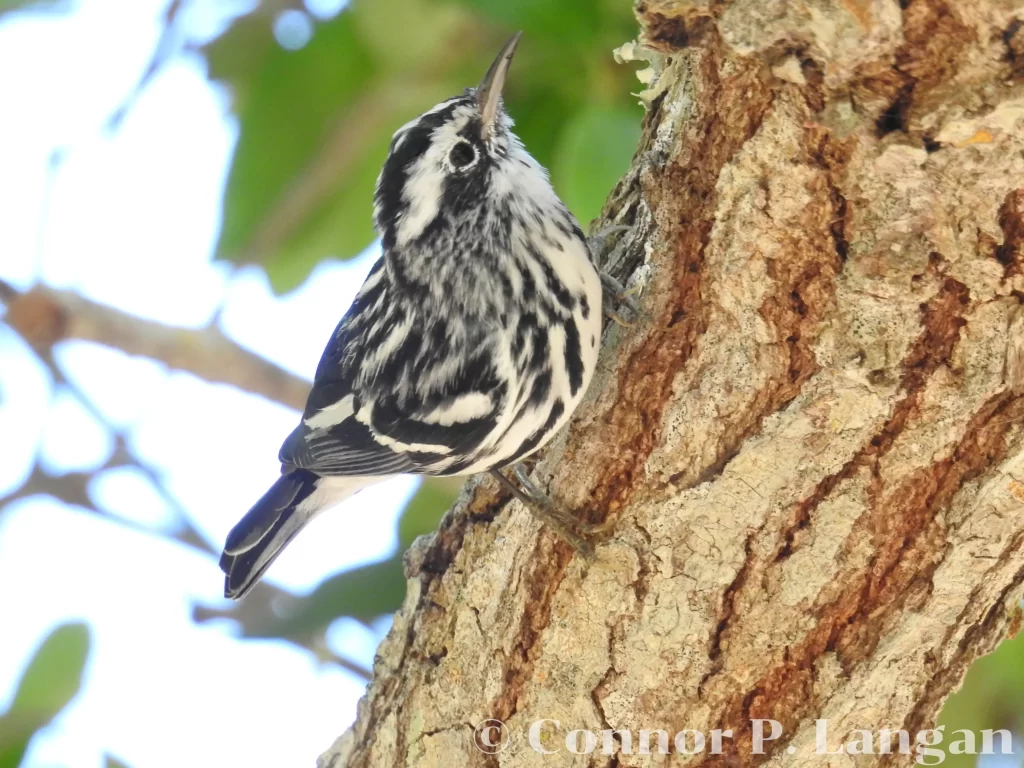
Black-and-white Warblers are found year-round in Florida, although they are far more common during the winter. Both males and females are black and white birds in Florida, but males have more black coloration.
Black-and-white Warblers frequent mixed woodlands where they creep up and down trees like nuthatches. Here, these small black birds in Florida forage for insects under tree bark and sing their thin songs.
These backyard birds in Florida do not visit bird feeders, but they may take a dip in a bird bath. Otherwise, look for them in parks, forests, and woodlots.

